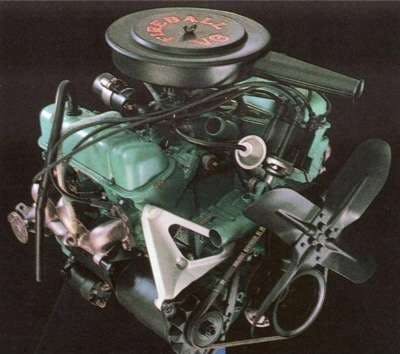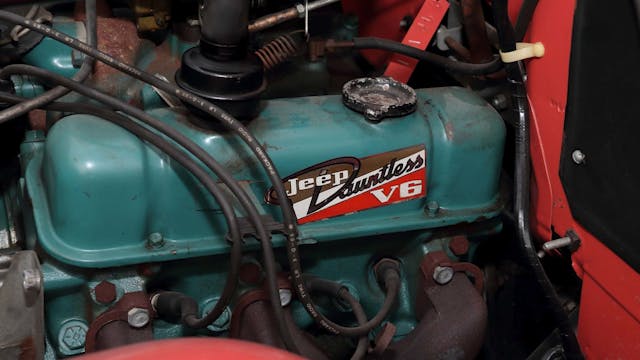Media | Articles
How Buick’s Fireball V-6 birthed one of the most successful engines in history
Search the internet for “greatest engines of all time,” and you’ll turn up the usual suspects: Chevy small-block, VW flat-four, Porsche flat-six, street Hemi. Aside from three years on Ward’s 10 Best Engines list, the Buick V-6 never makes the leaderboard, but it should. Over a span of 46 years, GM built 25 million of these engines. The six-cylinder eventually earned two pole positions and one third-place finish at the Brickyard, and it powered three Indianapolis 500 pace cars.
Its story started with the aluminum V-8. Buick became the first American manufacturer to develop an aluminum block for a mass-produced V-8 with the Fireball, a 215-cubic-inch mill boasting 155 hp and 220 lb-ft. of torque equipped with a Rochester 2CG, and 185 hp and 230 lb-ft of torque with a four-barrel carb. It was a great little engine, especially for the fuel-conscious, but the era of bigger, faster, and burlier V-8s was dawning. An aluminum V-8 of that size wasn’t going to propel a Skylark to the kind of speeds that Chevrolet could realize even with its small-block V-8s. Neither was Buick’s V-8 a worthy challenger to Oldsmobile’s 330-cubic-inch high-compression Jetfire Rocket. Plus, the aluminum 215 was expensive to build. By 1965 Buick had sold off the design to Rover for use in vehicles better suited to its size and power output.

However, Buick’s 215 V-8 laid the groundwork for another engine built from a less advanced material: The 198-cubic-inch Fireball V-6. “They were looking at designs from Lancia,” says Bill Baylis, who specialized in building Buick racing engines at Baybury Farm Buicks in Corinth, Vermont. “But the Lancia had a narrow 60-degree angle between the V. Because [Buick] used the same design from the 215, the Fireball V-6 has a 90-degree V.”
V-8s do have an advantage over V-6s: balance. A four-stroke engine requires a total firing interval of 720 degrees, divided by the number of cylinders. A V-8 evenly divides that 720-degree cycle with a 90-degree firing interval per cylinder, meaning that the engine inherently balances itself each time a cylinder fires. The Fireball V-6, on the other hand, has an odd firing interval of 90 degrees and 150 degrees. “The motor mounts in an odd-fire V-6 really act to absorb a lot of the vibrations that the engine produces,” says Baylis.

Still, Buick’s V-6 had its own advantages. A fully dressed 216-cubic-inch Chevy inline-six tipped the scales around 650 pounds. The 198-cubic-inch Fireball V-6 from Buick was more than 200 pounds lighter. For the compact, economy-size vehicles that these engines would power circa 1962, the Fireball V-6 was the clear winner.
Marketplace
Buy and sell classics with confidence
Even as it found an eager buyer for the aluminum V-8 in Rover, Buick was developing a more conventional replacement for its lightweight V-8. To maximize the development investment, the Fireball V-6 grew to 225 cubic inches, utilizing components and tooling from the 300-cubic-inch version of Buick’s own line of small-block V-8s.
Right at that moment, Kaiser was desperate to find new power for the CJ5, which had been soldiering on with the same Hurricane four it had used for the last decade and a half. The Hurricane was perfectly adequate for a vehicle as light as the CJ, but Kaiser Jeep had also introduced the more refined (read: heavier) Jeepster Commando in 1966 as a competitor to both the Bronco and the Scout, which were both offering V-8s by 1967.
Enter the Buick V-6, which Kaiser Jeep purchased outright from Buick for 1966, and rebadged as the Dauntless V-6. The 150 hp and 235 lb-ft of torque provided by the Dauntless bought the manufacturer some time until Jeep developed its own six-cylinder and V-8.

What transpired in 1974 sounds like the kind of apocryphal stories about how [insert guitar hero here] invented distortion by sticking knitting needles in his amp, but this comes straight from the horse’s mouth courtesy of Automotive News. Cliff Studaker, Buick’s assistant chief engineer, told the publication how the Apollo ended up with a V-6 thanks to a panicked call from his boss, chief engineer Phil Bowser. “Phil wanted to know where the V-6 equipment was and whether we had any engines we could evaluate,” says Studaker.
Studaker ended up locating an old Fireball V-6 at a Flint salvage yard. “Without hesitating, we rebuilt the engine with new parts and installed it in an Apollo, the smallest car Buick was building at the time,” Studaker says. “When my boss returned, he told Cole that the car we had assembled with the V-6 could be part of the solution to our fuel-economy concerns. Three days later, Cole called to say he wanted to drive the Apollo.”
“The usual procedure was to hop in the car and drive a few blocks around Detroit,” Studaker says, but Cole and Studaker “left the executive garage and headed south on I-75 passing every car on the road.” Cole was on a mission. “I had no idea where we were going until we arrived at the Jeep plant in Toledo,” says Studaker. “Managers there showed us V-6 tooling that had been mothballed for years.”

Buick bought back the entire manufacturing line back from AMC and began to ramp up production at record pace. “We worked through the 1974 Christmas holidays,” Studaker recalls. “GM’s manufacturing people hauled the engine line from Toledo to Flint and reinstalled it on exactly the same footings from which it had been removed seven years earlier.” Just 137 days after Buick agreed to buy back the engine line, it had the odd-fire V-6 installed in five cars: the Skyhawk, Apollo, Skylark, Century, and Regal, and then in the LeSabre in ’76. “Thanks to the V-6, we scored at the top of our classes in 1974 EPA fuel economy ratings,” adds Studaker.
“In 1977, Buick redesigned the engine internals to fire at an even 120 degrees and it smoothed the engine out considerably,” says Bill Baylis. Buick introduced a new split-pin crank that transformed the odd-fire order into an even-fire one, producing a butter-smooth idle. In the Bicentennial Indy 500, Buick delivered a Century pace car with a turbocharged 3.8-liter V-6 with 306 hp, pointing the way forward not only for V-6s, but for turbocharging in American cars.
For both 1960s Buick and Jeep collectors and enthusiasts, the Fireball and Dauntless engines are almost footnotes. All the attention goes to V-8-powered Buicks and inline-six-powered Jeeps; but those powerplants trace their ancestry directly to one of the most successful engines in American automotive history.












